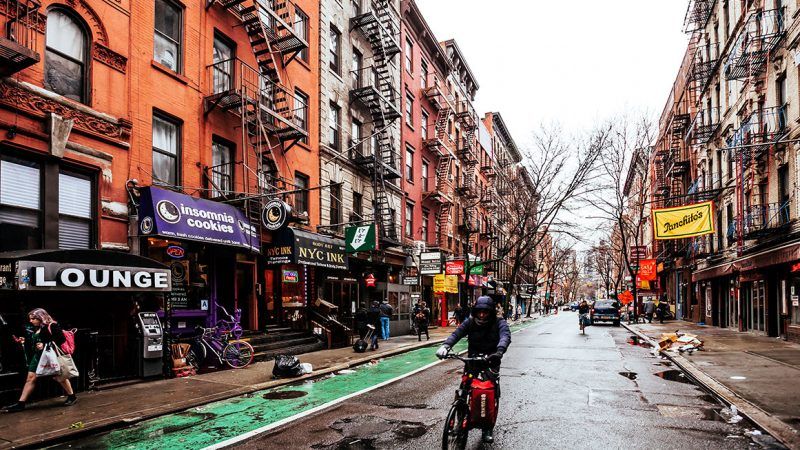Adding Jobs but Not Housing Is a Recipe for Urban Unrest
New York City has failed to zone for enough housing to keep pace with growth.

When it comes to the country's urban housing shortage, California gets all the headlines. Yet the situation is not much better in New York City, where surging employment growth is outpacing new construction, leading to longer commutes and higher housing costs.
Since 2008, the 22.6-million-person New York metro area has added 924,000 jobs. Despite this growth, the region has built only 457,000 units of housing, or about one new home for every two jobs. The ratio is even more skewed in New York City, where only one unit of housing has been built for every 3.55 new jobs, according to the city's Department of Planning.
Northern New Jersey is responsible for the lion's share of new residential development, building 40 percent of the metro's post-recession housing despite having only 30 percent of its population and adding only 15 percent of its jobs since 2008. By comparison, New York City overall has added 70 percent of the region's new jobs since 2008 but only 40 percent of its new housing units.
Much of this is policy-driven. New Jersey is relatively accommodating of new development, while New York City has failed to zone for enough housing to keep pace with growth. The New York suburbs, meanwhile, are positively hostile to new building.
The result is that more people are making longer commutes. The New York metro area has the fourth worst traffic in the country, and trains across the Hudson are as overcrowded as they are late. Workers seeking to avoid this drudgery by moving closer to their jobs in the city can expect to pay some of the highest rents in the country.
"Cities are labor markets," says Michael Hendrix, an urban policy scholar with the Manhattan Institute. "If we fail to scale housing and transportation to job centers, then we are failing the basic function of a city."
Hendrix warns that if New York continues to see commute times and housing costs grow, the economic dynamism of the region will decline. Far from embracing necessary reforms, he says policy makers are making things worse by doubling down on rent stabilization, which limits how much landlords can raise rental prices. "They've chosen to preserve units for people who've already lucked out in the housing lottery and lock out newcomers and outsiders," he says.
New York's housing situation has not reached California levels of dysfunction, but housing crises also aren't created overnight. Not building enough today can mean serious problems tomorrow.
Rent Free is a weekly newsletter from Christian Britschgi on urbanism and the fight for less regulation, more housing, more property rights, and more freedom in America's cities.


Show Comments (58)